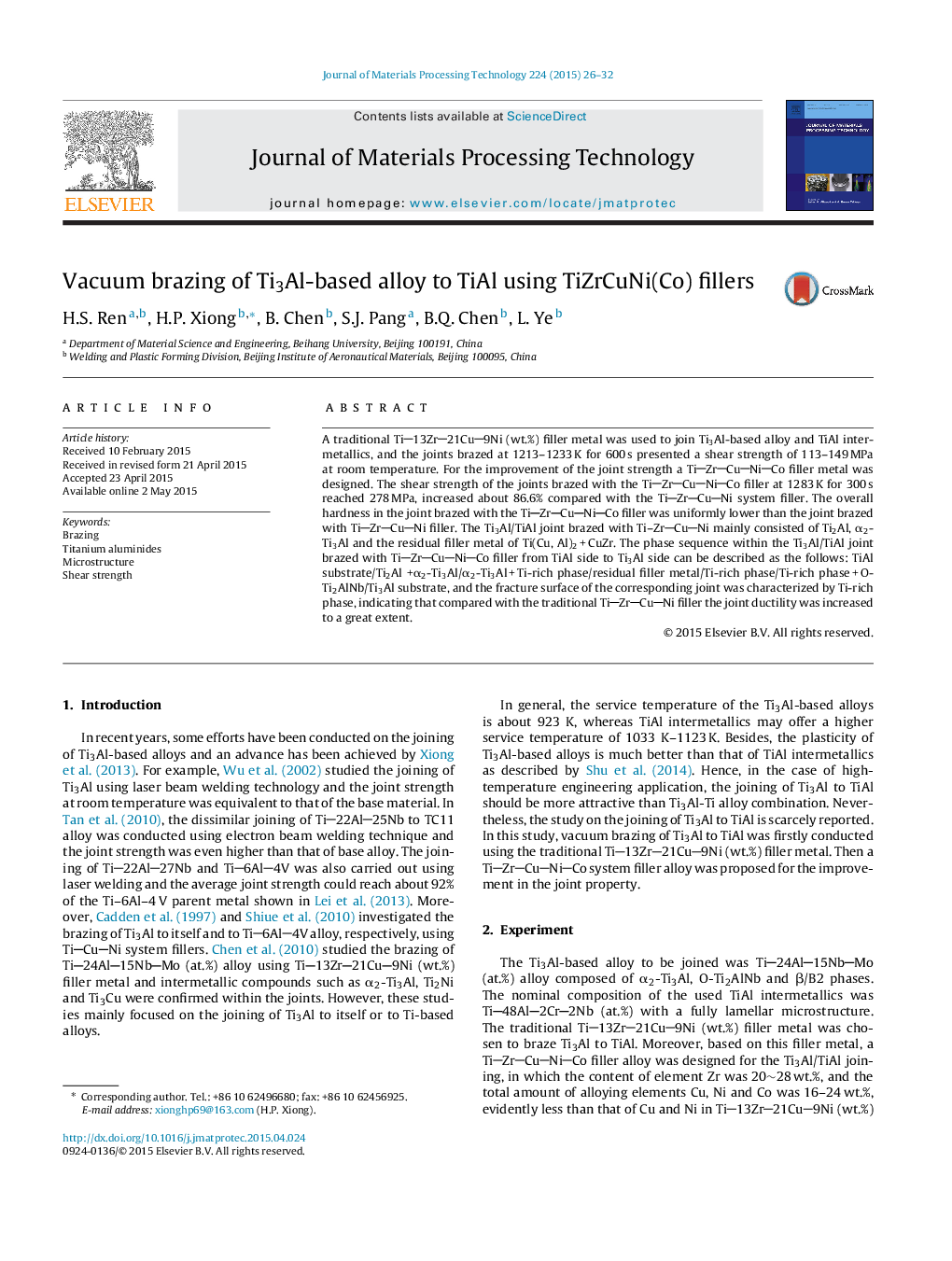| Article ID | Journal | Published Year | Pages | File Type |
|---|---|---|---|---|
| 7177016 | Journal of Materials Processing Technology | 2015 | 7 Pages |
Abstract
A traditional Ti13Zr21Cu9Ni (wt.%) filler metal was used to join Ti3Al-based alloy and TiAl intermetallics, and the joints brazed at 1213-1233 K for 600 s presented a shear strength of 113-149 MPa at room temperature. For the improvement of the joint strength a TiZrCuNiCo filler metal was designed. The shear strength of the joints brazed with the TiZrCuNiCo filler at 1283 K for 300 s reached 278 MPa, increased about 86.6% compared with the TiZrCuNi system filler. The overall hardness in the joint brazed with the TiZrCuNiCo filler was uniformly lower than the joint brazed with TiZrCuNi filler. The Ti3Al/TiAl joint brazed with Ti-ZrCuNi mainly consisted of Ti2Al, α2-Ti3Al and the residual filler metal of Ti(Cu, Al)2 + CuZr. The phase sequence within the Ti3Al/TiAl joint brazed with TiZrCuNiCo filler from TiAl side to Ti3Al side can be described as the follows: TiAl substrate/Ti2Al +α2-Ti3Al/α2-Ti3Al + Ti-rich phase/residual filler metal/Ti-rich phase/Ti-rich phase + O-Ti2AlNb/Ti3Al substrate, and the fracture surface of the corresponding joint was characterized by Ti-rich phase, indicating that compared with the traditional TiZrCuNi filler the joint ductility was increased to a great extent.
Related Topics
Physical Sciences and Engineering
Engineering
Industrial and Manufacturing Engineering
Authors
H.S. Ren, H.P. Xiong, B. Chen, S.J. Pang, B.Q. Chen, L. Ye,
